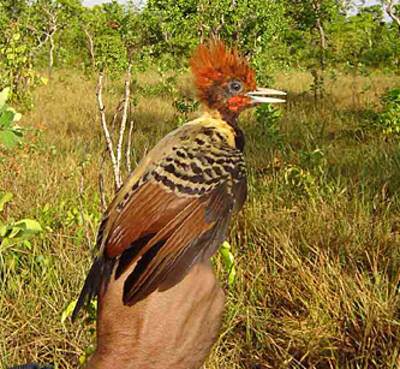
June 13, 2008

Caatinga Woodpecker, Celeus obrieni , the first sighting since 1926. Photo by Guilherme R C Silva.
One of Brazil’s long lost birds, known only from a single specimen collected in 1926, has been rediscovered after an absence of 80 years. The rediscovery of the Caatinga Woodpecker (Celeus obrieni) has delighted conservationists worldwide and gives hope for other “lost” birds feared extinct.
The single specimen has been considered a subspecies of Rufous-headed Woodpecker also known from South America. However, recently a recent review by ornithologists involved with the South American Classification Committee of the American Ornithologists’ Union concluded that dramatic differences in the plumage of Caatinga Woodpecker warranted full species status.
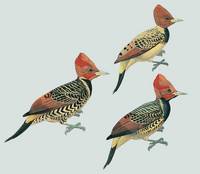
Caatinga Woodpecker (top right) differs from Rufous-headed Woodpecker (bottom left and right) on account of its lighter plumage.
The Caatinga Woodpecker was found by a Brazilian ornithologist, Advaldo do Prado, whilst surveying in the Tocantins region of Central Brazil. “Rediscovering birds is what many conservationists dream about,” said Pedro Develey, Coordinator of SAVE Brasil (The Brazilian arm of the International bird charity, BirdLife), “There is something truly special about finding a bird that many of us considered ‘lost’ for so long.”
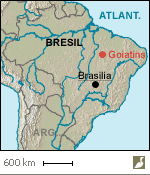
The Caatinga woodpecker was found 200 miles east of the area where the previous specimen was found in 1926, suggesting to conservationists that other individuals may lie in similar habitats in the eastern part of Central Brazil. BirdLife International, the official Red List Authority for birds for the IUCN Red List, is to formally propose that Caatinga Woodpecker be listed as Critically Endangered.
“Rediscoveries like this allow us crucial opportunities for understanding behaviour, ecology and for gauging conservation status with a view to creating protected areas within the Tocantins, a region that has suffered in recent years with expansion of agriculture and new road projects,” said Pedro Develey.
Golden-crowned Manakin, Lepidothrix vilasboasi (above).

Rufous-fronted Ant-thrush, Formicarius rufifrons (above).
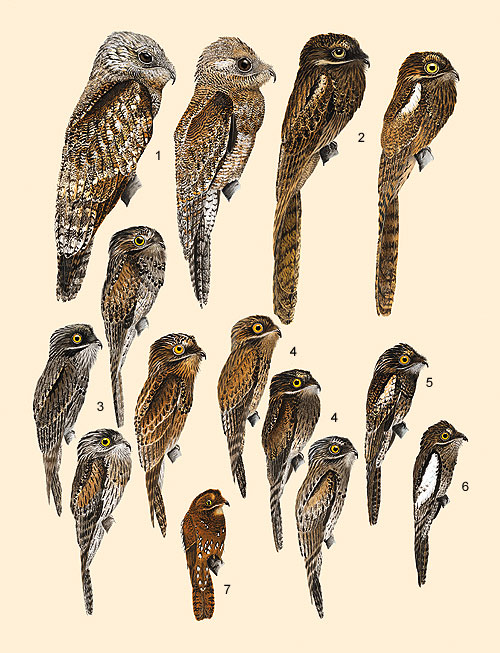
White-winged Potoo = #6, Nyctibius leucopterus (above).

Kaempfer’s Tody-tyrant, Hemitriccus kaempferi (above).
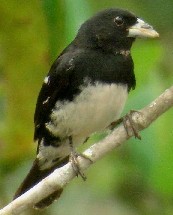
Cone-billed Tanager, Conothraupis mesoleuca (above).
The new finding comes in the wake of a number of recent bird rediscoveries in Brazil including the Golden-crowned Manakin, the Rufous-fronted Ant-thrush, the White-winged Potoo, Kaempfer’s Tody-tyrant and most recently, the Cone-billed Tanager.
“Caatinga Woodpecker and rediscoveries like it provide hope for other South American birds currently missing and feared extinct, some of which haven’t been seen for over 150 years,” said Stuart Butchart, Global Species Coordinator, BirdLife International and co-author of “Lost and Found: a gap analysis for the Neotropical avifauna,” a recent article on the rediscovery of “lost” birds.
Data from BirdLife International’s Global Species Programme states that Brazil has more globally threatened birds than any other country. Of the 111 species at risk of extinction in Brazil, 98 live in the Atlantic forest, which has been reduced by more than 90% of its original extent.
For more information on other ‘lost’ bird species in South America go to the link here to download “Lost and Found: a gap analysis for the Neotropical avifauna”, extracted from Neotropical Birding 2006, the new magazine of the Neotropical Bird Club.
(Appreciation to Chad Arment, author of Boss Snakes: Stories and Sightings of Giant Snakes in North America, for this report and link.)
Additional bird photography is a feature of Cryptomundo.
About Loren Coleman
Loren Coleman is one of the world’s leading cryptozoologists, some say “the” leading living cryptozoologist. Certainly, he is acknowledged as the current living American researcher and writer who has most popularized cryptozoology in the late 20th and early 21st centuries.
Starting his fieldwork and investigations in 1960, after traveling and trekking extensively in pursuit of cryptozoological mysteries, Coleman began writing to share his experiences in 1969. An honorary member of Ivan T. Sanderson’s Society for the Investigation of the Unexplained in the 1970s, Coleman has been bestowed with similar honorary memberships of the North Idaho College Cryptozoology Club in 1983, and in subsequent years, that of the British Columbia Scientific Cryptozoology Club, CryptoSafari International, and other international organizations. He was also a Life Member and Benefactor of the International Society of Cryptozoology (now-defunct).
Loren Coleman’s daily blog, as a member of the Cryptomundo Team, served as an ongoing avenue of communication for the ever-growing body of cryptozoo news from 2005 through 2013. He returned as an infrequent contributor beginning Halloween week of 2015.
Coleman is the founder in 2003, and current director of the International Cryptozoology Museum in Portland, Maine.
Filed under Breaking News, Cryptotourism, CryptoZoo News, Cryptozoologists, Cryptozoology, Expedition Reports, Extinct, Eyewitness Accounts, New Species, Winged Weirdies